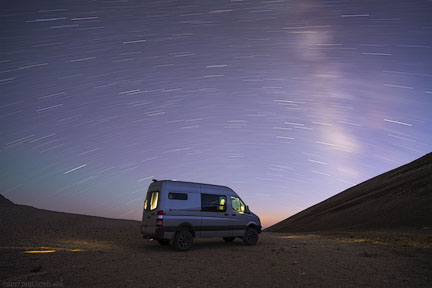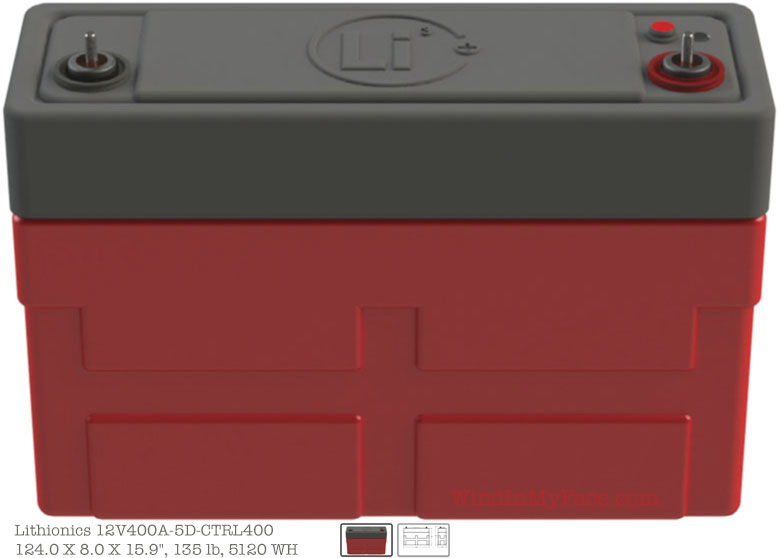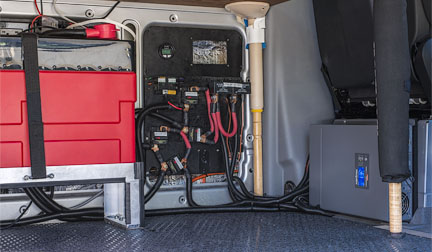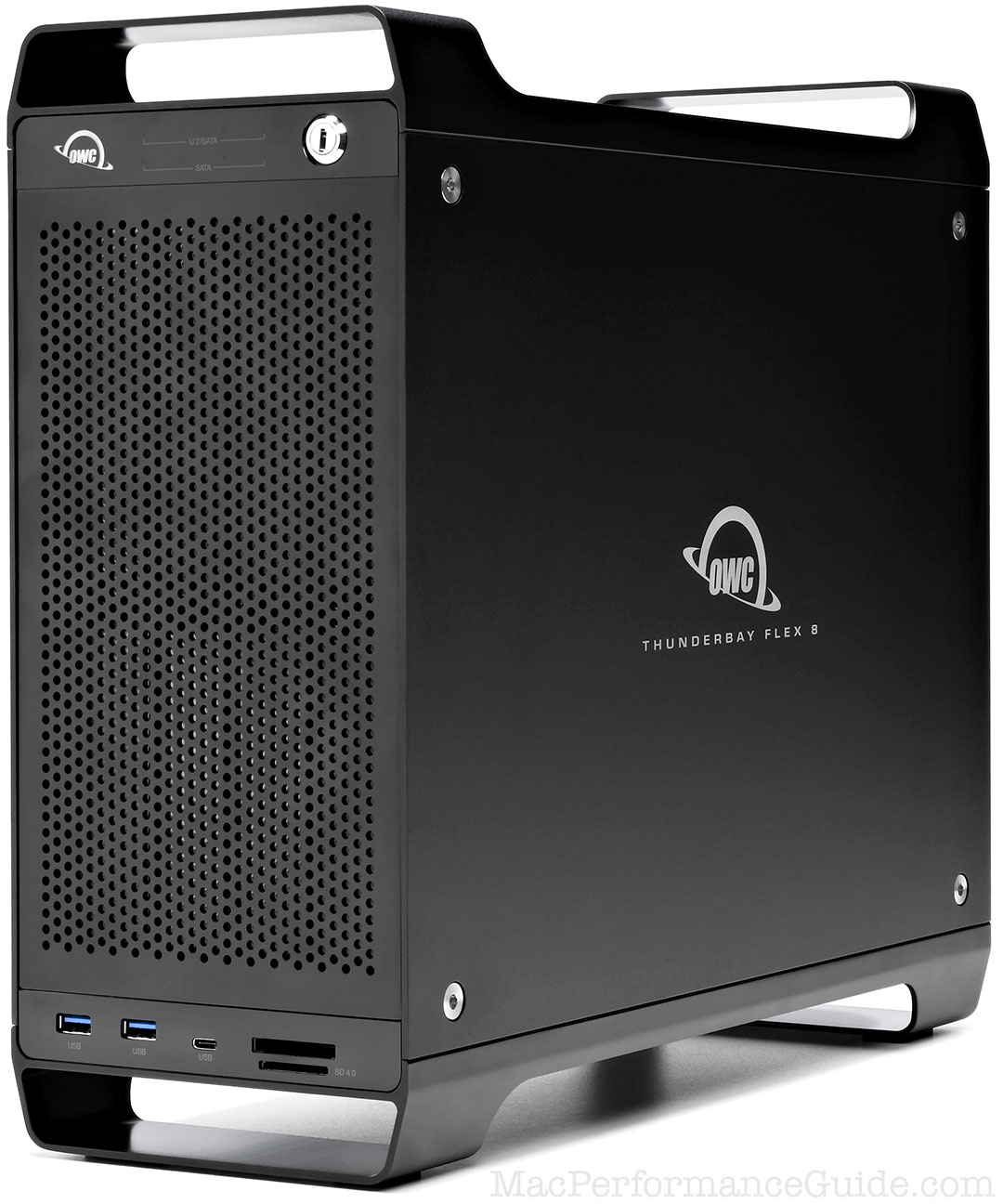RV Batteries: Lithionics Lithium Batteries

Photographer and cyclist and Mac expert and software engineer Lloyd Chambers is available for consulting on general Sprinter considerations at his usual consulting rates via phone, or in person in the Palo Alto, CA area. Save yourself hours and mistakes by discussing issues up-front. More about Lloyd....
Get your batteries and 2nd alternator and regulator (the whole kit!) from NationsStarterAlternator.com.
I ordered and received the Lithionics 12V400A-5D-CTRL400 with 5120 watt hours (usable around 4600 WH), dimensions 24.0 X 8.0 X 15.9, weighing 140 pounds in its shipping crate, but only about 60 pounds for the battery, far lower than the quoted weight in the spec sheet. It was installed by upfitter ADF Sprinters on September 9th.
Warning on many lithium batteries: the Lithionics product is engineered for long life and safety. The same cannot be said of many any other lithium batteries on the market, which have severe shortcomings (lifespan, charging electronics, unstoppable runaway fire hazards). Excercise care in buying a lithium battery. For RV use of any kind, this site recommends ONLY the Lithionics battery at this time.
...
See the overview of batteries before reading this page.
I researched batteries extensively before deciding on the Lithionics lithium ion battery . Overview as per Lithionics:
Lithionics Battery® is driven by our mission to bring modern power to modern machines. By leveraging over 30 years of factory automation and custom fabrication experience, our company produces batteries that deliver a longer life, a faster recharge, are safer and environmental friendly.
- 4 to 7 times lighter than any other battery.
- Charges 3 to 4 times faster than any other battery.
- A single Lithium ion battery can replace to 4 lead-acid batteries.
- NeverDie® Battery Management Technology (BMS) that leaves 20% reserve energy .
- Increased life expectancy of the host device as well as battery life that at least double RoHS compliant solutions that improve the quality of life
Field usage to date has borne out these claims: the Lithionics battery is a terrific product.
What I chose for my Sprinter van
Update 15 Jan 2018: I purchased a 2nd 400 amp battery (not yet installed as this was written). Wrapped in a coat of bubble pack, it weighs 118 pounds, which includes built-in BMS, built-in internal temperature sensor with sub-freezing cutoff charge protection. Doubling up means half the amperage draw from each battery which reduces voltage drop considerably under high draw (up to 200 amps with space heater), which makes power inversion much more efficient, over an above the doubled capacity. And in 7 years, of 20% capacity is lost, I’ll still have 1.8X the power of a brand-new single battery.
I purchased my Lithionics battery and the Xantrex 3012 pre-programmed to charge the Lithionics battery properly from Adam at NationsStarterAlternator.com.

5120 watt hours, 24.0 X 8.0 X 15.9, 135 pounds
I chose the Lithionics 12V400A-5D-CTRL400 for my Sprinter van, including the temperature intervention sensor and the state of charge (SOC) option and (initially) the Xantrex 3012 power inverter (order them at NationsStarterAlternator.com, ask for Adam and say that Lloyd Chambers referred you). The Xantrex 3012 can be programmed to charge the Lithionics batteries properly; Lithionics and Xantrex work closely together. I desired the 600 amp battery, but for budget reasons and my power calculations and the 5D case (slim in width), I went with 400 amp.
Limitations under significant power draw
Voltage losses from cabling are a critical consideration. See Planning for Voltage Losses from Cabling and Battery. This applies to lead acid and lithium batteries and definitely the Lithionics battery as well.
Points of note
See also the NeverDie® Battery Management System.
Key points about the Lithionics lithium batteries that I found in investigating them:
- Max Continuous Charge Current" is 360 amps, so a 280 amp alternator can charge at very high speed.
- Discharge and charge OK at sub-freezing if D0/D1 (net charge) is negative (more draw than charge).
- A "temperature intervention sensor" option should be considered mandatory for use in sub-freezing conditions. It prevents the battery from charging (D0/D1 net current) when the temp is too low or high
- An optional State of Charge (SOC) option can be built right into the battery with a cable connector for remote status display.
- Battery position is probably OK on its side, but Lithionics cannot vouch vouch for full service life if not positioned as advised.
The optional temperature intervention sensor option which prevents charging when the internal battery temperature is too low. I consider that option essential for my work in the mountains, where the temperature can drop as low as 0°F outside (perhaps as low as 10°F in the van). The thermal mass of the battery and/or some low-level draw (e.g., leaving the power inverter on all night) might help keep the batter warm, but it seems very unwise to assume that the battery will stay above freezing.
The State of Charge (SOC) option can be built right into the battery, with an ethernet cable connecting it to a remote status display—elegant and simple.
8-bay Thunderbolt 3
2.5 or 3.5 inch hard drives, NVMe SSD, USB-C, USB-A, DisplayPort 1.4, SD slot, PCIe slot, 500W power supply.
Non-RAID or RAID-0/1/4/5/10.
Capacities up to 128 Terabytes!
Size/weight and capacity
The table below summarizes the expected runtime of battery capacities from 2816 to 7680 watt hours.
220 amp = 2816 WH, 22.2 x 8 x 12.2, 62 pounds
330 amp = 4224 WH, 23 x 13 x 11.3, 62 pounds
400 amp = 5120 WH, 24 x 8 x 15.9, 135 pounds <== chosen for form factor and cost $$$$
400 amp = 5120 WH, 23 x 13 x 13.4, 135 pounds
450 amp = 5760 WH, 23 x 13 x 11.4, 115 pounds
480 amp = 6144 WH, 23 x 13 X 12.0, 141 pounds
525 amp = 6720 WH, 23 x 13 x 11.4, 135 pounds <== special fast charging, $$$$$
600 amp = 7680 WH, 23 x 13 x 13.4, 150 pounds <== special fast charging, $$$$$
At the high-end, 7680 watt-hours used to 80% discharge offers 6144 watt hours of real capacity. That’s enough for a 300 watt load for 20 hours—a nice computer setup for three days of work without recharging. Lithionics informs me that discharge to 90% is acceptable, so I’ve recalculated my runtime figures accordingly.
My pick based on form factor and watt hours but given budget constraints is the 12V400A-5D-CTRL400 with the following options:
- Temperature intervention sensor, to prevent battery damage by charging in sub-freezing conditions.
- State of Charge (SOC) option built into the battery (just run cable to remote display).
- Field Control Circuit option (might be needed for some charging inputs).
- Xantrex 3012 3000-watt power inverter with shore power charger support.
As per the table below, see Calculating Realistic Electric Load .

Longevity
Here’s where real value comes in vs lead acid batteries and the cheap Chinese-made cells-in-a-steel-box-in-case-of-explosion lithium alternatives (which many companies do sell!)
I look at this pretty simply: If I spend 3 months (91 days) a year in the Sprinter van and I deplete the battery by 90% every single one of those days (the chance of this is about nil), then I “use up” 91 battery cycles. If I do that for 7 years, I use up 637 cycles. At that rate, it would be two decades before it would become an issue, but normal battery aging will mean that year 10 is the real realistic cutoff, year 12 if lucky and some loss of power is acceptable (yes).
Suppose one spends 365 days a year using the battery, discharging it by 90% twice a day—that’s not even realistic, since charging it takes hours—it would have to be shore power, so the battery would not be discharging at all. But just for giggles, figuring one discharge per day by 90% at 365.5 days a year for 7 years = 2558 cycles—and the battery should still be yielding 80% of its capacity.
Anyone who realistically needs that much power every day 365 X 7 years should discharge less deeply, or get two batteries (in parallel) and discharge to 50%, thus getting 5800 charge cycles = ~15 years at once per day.
DoD = Depth of Discharge e.g., 90% DoD means 10% charge left

Below, the Lithionics 400 amp battery along with the wiring panel and Xantrex Freedom XC 2000W inverter/charger.




